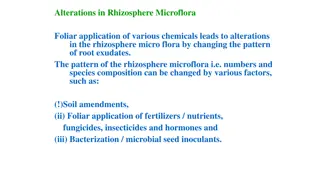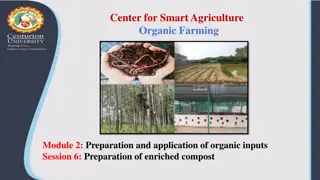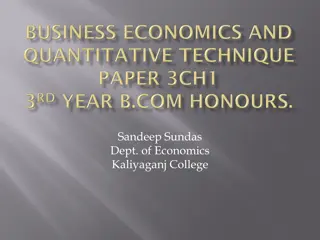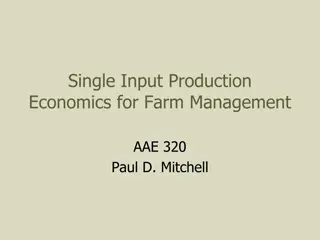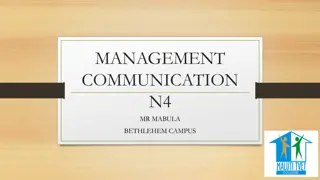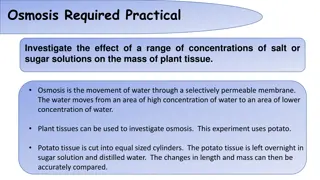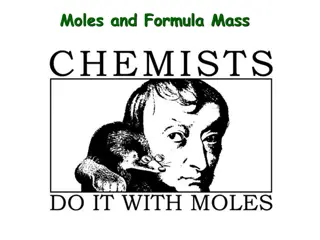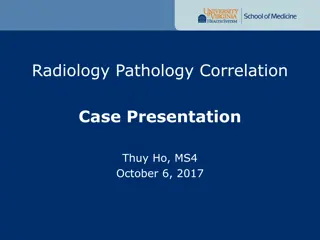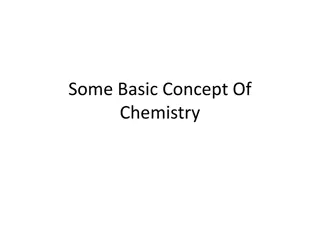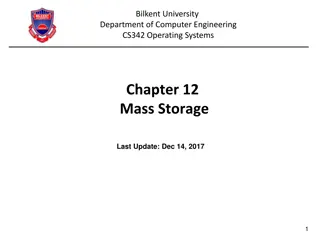Methods for Mass Production of AM Inoculants
Techniques for mass production of arbuscular mycorrhizal (AM) inoculants involve in vivo culture on green house plants, spore production with antibiotic treatment, field growth monitoring, and in vitro/axenic culture techniques. Solutions include using living roots, inert substances like vermiculite, and root organ culture. These methods aim to efficiently produce AM inoculants for enhancing plant growth and soil health.
Download Presentation

Please find below an Image/Link to download the presentation.
The content on the website is provided AS IS for your information and personal use only. It may not be sold, licensed, or shared on other websites without obtaining consent from the author. Download presentation by click this link. If you encounter any issues during the download, it is possible that the publisher has removed the file from their server.
E N D
Presentation Transcript
MASS PRODUCTION OF AM INOCULANTS
MASS PRODUCTION: PROBLEMS ANDPROSPECTS Being obligate symbiontsAM fungi could be mass produced only in the presence of living roots. SinceAM fungal associations are universal and have been reported in almost all terrestrial plants, these can be reproduced on a wide range of host plants. There are several techniques reported for mass production ofAM inoculum.
A. IN VIVO CULTURE AM fungi are grown on roots of green house plants and chopped mycorrhizal roots, often mixed with growth media containing hyphae and spores, are used as source of inoculum. Soil could be replaced by inert substances such as vermiculite, perlite, sand or a mixture of these for crude inoculum production.
MASS PRODUCTION Spores + antibiotic solution ( streptomycin of 220 ppm concentration for15 min ) Wash spores with mercuric chloride Wash with distilled water Inoculate the plant pots ( Guinea grass or Bahiya grass ) Keep in green house for3 - 4 weeks Uprootthe plants Cont . CONT .
Checkforcolonization Again keep for field growth ( 1 1 months ) Macerate the root Check formoisture content ( only5 % shouldbe there) Use as biofertilizer
METHODOF PRODUCTIONOF VAM 2. Sprinkling of water in tank with vermiculite 3. Making of furrows to sow maize seeds 1.Tank for mass multiplication of AM
6. Vermiculite contained raised AM infected maize plants 4. Sowing the seeds in furrows 5. View of the maize sownAM pit
B. IN VITRO/ AXENIC CULTURE TECHNIQUES i) Solution culture ii)Aeroponic culture iii) Root organ culture
I) SOLUTION CULTURE Involves growing infected roots in aqueous medium enriched with mineral nutrients required for the growth of the roots under controlled biotic and abiotic conditions. ii) AEROPONIC CULTURE Involves applying a fine mist of nutrient solutions to colonized roots forAM fungal inoculum production. III) ROOTORGANCULTURE Use of a modified agar medium (MS rooting medium)/ liquid medium for creation of increased amount of roots from callus tissue and these roots are infected by AM spores or by surface sterilized root bits obtained from mycorrhizal plant.
Mycorrhiza species CROP Barley, maize, wheat Glomus spp. Bean Asaulospora morrowiae, Glomus, Gigaspora Peanut Glomus fasciculatum, Sclerocystis dussi Pea Glomus intraradices Cotton Glomus sp., Sclerocystis sinuosa Tomato, potato Gigaspora margarita, Glomus spp., Acaulospora sp. Entrophosphora colombiana, Scutellospora sp. Glomus fasciculautm Glomus faciculatum, G. mosseae Black pepper Cardamom Citrus Glomus mosseae Marigold


